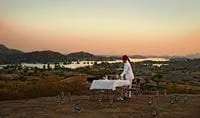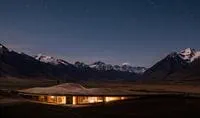Arctic Trip Planning
Arctic cruising has a very specific season due to the sea ice; all expedition cruises depart from July through to September and therefore do not sail in the winter months from November through to June.
Temperatures are of the extremes and can be largely variable depending on conditions; the Arctic Circle can see summer temperatures vary between -10°c and 10°c. Southern Greenland and the coast of Labrador in Canada can peak at 16°c whereas deep in the Northwest passage thermometers rise no higher than 5°c.
Early Season (June and July)
Summer begins to show in the Arctic around June and July. This is the season when polar bears gather on the Arctic Tundra in Churchill, Manitoba and July is also when the Beluga Whales begin to migrate into the Hudson Bay. The early signs of summer brings the birdlife with 100s of species migrating from the southern hemisphere.
Out at sea this is also the time when the ice starts to melt, allowing the rugged terrain to come to life with flora and fauna. Pack ice, which is a mass of ice floating in the sea, will still be present in June. This is also the best time to see the snow and icescapes.

Mid-Season (Late July and August)
This is peak season for wildlife, known as birds, bears and beluga season in Churchill, Manitoba these are favourable months to view some of the Arctic’s most special wildlife. The Arctic tundra flowers are blooming creating colourful landscapes to spot arctic foxes, arctic hares and of course the polar bear.
This is also an excellent time to head across Baffin Bay and to West Greenland where you can go in search of whales, minke, humpback, fin and even blue whales can be found in the Arctic Ocean. Less ice also means more channels around the deep fjords and glaciers, perfect to be explored by boat or kayak.

Late Season (Late August and September)
The Arctic summer is in full swing, deep into the Arctic Circle the ice has subsided allowing boats access to this epic explorers route that is the Northwest Passage,. The magnificent scenery and barren landscapes make this remote end of the earth truly spectacular. As September creeps in you may have the chance to see the aurora borealis as the nights reappear. On the land in Churchill, Manitoba, the polar bears begin to congregate on the Hudson Bay shores waiting for the sea ice to return.

Arctic Winters (October - March)
Whilst it is not possible to navigate the Arctic seas during the winter due to the sea ice the land is still very much alive with Arctic activity. October to early November is the perfect time of year to see the polar bear in a habitat of snow and ice. However the Arctic winter delights do not end there, whist the majority of wildlife has migrated or hibernated by the end of November for the depths of winter, January through to March is the best time to view the Aurora Borealis, the snowy terrain also makes this seasons perfect for dog mushing.

Call us on 020 8682 5066 to start planning your holiday
Why Scott Dunn?
Unique to You

- We listen to your travel goals and craft unique trips that are bespoke to you.
- We’re with you every step of your life’s travel journey, from honeymoons to family trips and beyond.
Seamless Service

- Global offices in the UK, US, and Singapore for 24/7 seamless service.
- We offer flexibility if your plans change so you can book with confidence and peace of mind.
Carefully Curated Collection

- We’ve curated an elevated collection of accommodation, experiences, and guides.
- Committed to fostering close global relationships to continue bringing you unique experiences.
Luxury in Every Sense

- We deliver a sense of luxury that matters most to you.
- Awarded Condé Nast Traveller’s Top Travel Specialists in the World 12 years in a row.